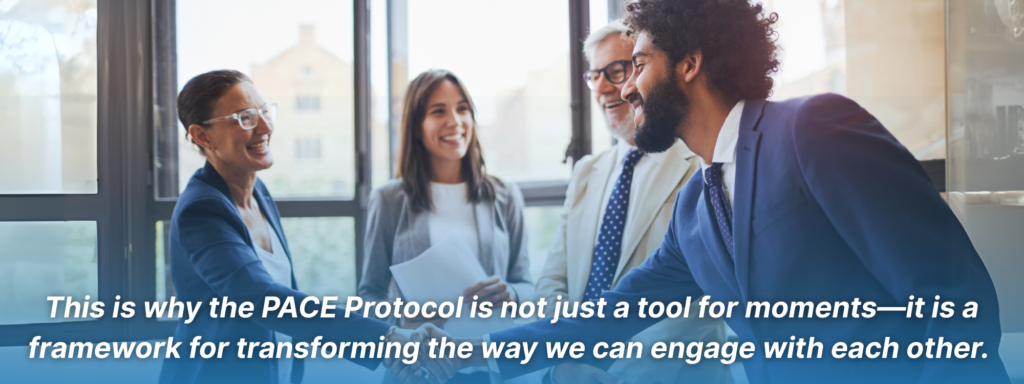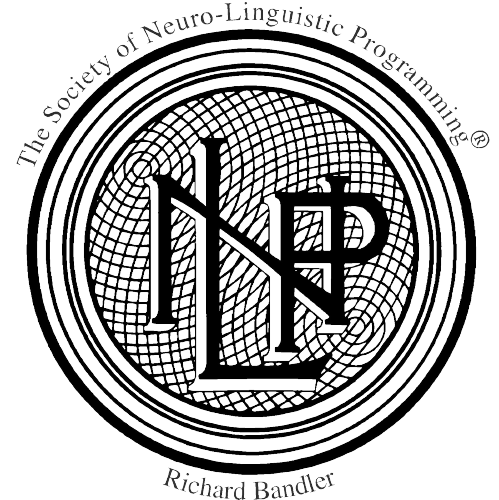The moment the first shot is fired, everything changes. It’s not just the bullet that moves—it’s time itself. A soldier, caught in the crosshairs of uncertainty, has two options: react or respond. One is reflex, raw and animalistic, the kind that gets you killed. The other is something else, something refined—a trained instinct, a rhythm of thought and action so fluid it seems like fate.
Outside of warzones, the stakes may not always be life and death, but the pattern remains the same. A CEO in a boardroom facing a hostile takeover. A paramedic working against the clock to stabilise a failing patient. A teacher, standing before a classroom where the collective boredom is thick enough to smother any lesson. What determines whether they succeed, or fail is not intelligence alone, nor instinct alone. It’s something deeper—a process so ingrained, so natural, that those who master it never even think about it.
But what if they could? What if influence, decision-making, and leadership followed an unseen structure—one that, when wielded deliberately, could turn uncertainty into mastery? And what if that structure was already embedded in the way we interact, persuade, and adapt, just waiting to be harnessed?
Silently Applied
Consider this: A negotiation is about to collapse. The lead negotiator leans in, sensing the growing resistance across the table. Every muscle in his body tells him to push harder—to press for agreement before the opportunity vanishes. But something stops him. He pauses. He listens. He recalibrates. And instead of forcing the deal, he lets the silence breathe, just long enough for the tension to dissipate. Moments later, the conversation shifts. A door that was about to slam shut creaks open again.
Elsewhere, a doctor delivers difficult news. The words are precise, the voice steady, but what matters most is not what is said—it’s what is not said. The pause before the prognosis, the gentle lean forward, the way their eyes hold space for the weight of the moment. It is control without force, guidance without command.
In a different setting, a leader stands before their team, announcing a sweeping change in company direction. The stakes are high. The workforce is anxious. They could dive straight into directives, but instead, they begin with a story. A story of challenge, of resilience, of a future that is not yet real but could be. And as they speak, the room shifts from resistance to readiness.
What do these scenarios have in common? At first glance, nothing. A negotiation, a medical conversation, a leadership speech—entirely different worlds. But beneath them all runs the same current, an unspoken process shaping outcomes before a single word is truly heard.
There is a method here, invisible but powerful, a framework for guiding uncertainty into clarity. It is not magic. It is not manipulation. It is something far more practical: an understanding of how people think, react, and decide. A rhythm of influence that can be wielded anywhere, by anyone who learns to see it.
Leadership & Negotiation
A new CEO walks into their first executive meeting, ready to take charge. They have the credentials, the strategy, the authority. And yet, within minutes, the atmosphere shifts against them. The boardroom does not welcome command. The more they push, the more the resistance hardens, like clay under too much pressure.
Contrast this with another leader, stepping into the same role. They do not begin with demands. Instead, they ask a question. They watch, listen, absorb. They sense the room’s temperature, the undercurrents of hesitation and doubt. Before offering solutions, they acknowledge the unspoken fears. And when they finally speak, their words land—not because they hold more power, but because they first created space for power to be received.
This is not about deferring authority or hesitating in the face of resistance. It is about understanding a fundamental truth: No real influence happens without permission. Permission is not granted through status or title; it is earned through presence, awareness, and timing.
The same principle governs high-stakes negotiations. The amateur barges forward, stating terms, pushing for an outcome. The expert, by contrast, moves like a chess player sensing the shifting dynamics of the board. They do not demand agreement. Instead, they open doors, guiding their counterpart from reluctance to possibility. They speak the language of subtlety—pauses, gestures, moments of controlled silence that allow the other party to feel in control even as the outcome is being shaped.
Permission is not about asking—it is about readiness. About knowing when to speak and when to listen, when to lead and when to wait. Those who master it can enter any room, any conversation, and shift the course of events before anyone realises what has happened.
And yet, permission alone is not enough. The next step is even more critical: turning instinct into control.

Decisions & Strategy
In the operating theatre, the young surgeon’s hands tremble. The patient is crashing. Nurses await orders. Every instinct screams for action—do something, anything, now. But then, across the room, the lead surgeon speaks. Calm. Measured. ‘Breathe. Check vitals. What’s the sequence?’ The panic dissolves. The young surgeon exhales, steadies their grip, and follows protocol.
Crisis reveals the divide between reaction and control. Some people lose themselves to instinct—fight, flee, freeze. Others impose logic upon the chaos, shaping the unknown into structured response. They are not immune to fear; they simply refuse to let it govern them.
In business, this same dynamic unfolds daily. A product launch goes wrong, and the leadership team scrambles. Meetings are held, fingers pointed, the reactive mind chasing urgency over clarity. Contrast this with the strategist who pauses, analyses, and reframes: ‘What do we know? What don’t we know? What matters most right now?’ They shift the group from crisis to control, from frenzy to focus.
The ability to override raw instinct and engage deliberate thought is not inborn—it is learned. It is the difference between someone flailing in quicksand and someone floating, conserving energy, assessing options. This is how good leaders think under pressure. They ask the right questions at the right time, cutting through noise to find the signal. They do not deny instinct; they simply refuse to be led by it.
But control without connection is cold, mechanical, and ultimately unsustainable. To lead, to teach, to inspire, one must go beyond structure—into something deeper, something human.
Teaching, Coaching & Storytelling
A classroom. The teacher speaks, but the students are elsewhere—half-glazed eyes, restless hands, the slow seep of disengagement. The lesson is well-planned, the material sound, yet it lands like a stone on concrete. Until the teacher shifts. They lean in, lower their voice, begin to tell a story. Not a lesson, not a lecture—something personal, vivid, real. And suddenly, the room breathes differently. The students lean forward. The lesson is no longer words on a page; it is alive.
In coaching, in leadership, in persuasion, the same principle applies. People respond not to information, but to connection. A list of instructions is forgettable. A well-crafted moment, a shared experience—that lingers.
Consider a company rolling out major change. The executives deliver PowerPoints, data sheets, bullet points of efficiency gains. The workforce resists. People do not rally behind spreadsheets. But when a leader steps forward and tells a story—of struggle, of why this change matters, of what is at stake—something shifts. The resistance softens. The message lands.
Why? Because people do not merely process facts; they feel them. Influence is not an intellectual exercise—it is visceral. A great coach does not dictate; they illuminate. A great teacher does not instruct; they reveal.
Storytelling, rhythm, tone—these are not frivolous tools. They are the architecture of belief, the scaffolding of trust. Those who wield them well can take an indifferent audience and turn them into a captivated one.
But connection alone is fleeting. For transformation to last, it must be embedded—not just in memory, but in meaning.

Change & Transformation
Movements do not rise and fall on logic alone. If they did, history would be filled with revolutions driven by spreadsheets. Instead, real change embeds itself in something deeper—in the fabric of meaning, in the stories we tell ourselves about who we are and who we can become.
Consider the suffragettes, the civil rights movement, the fall of the Berlin Wall. None of these were merely political events; they were shifts in identity. They were about belonging, about a redefinition of what was possible. Ideas do not survive on rhetoric—they endure when they are felt as truth.
In organisations, culture operates the same way. A leader can announce a ‘new direction’ a hundred times, but if that shift is not lived—if it is not emotionally and socially reinforced—it will evaporate upon contact with reality. The leaders who shape lasting change do not just implement policies; they shape perception. They embed new narratives, new shared truths.
This is why the PACE Protocol is not just a tool for moments—it is a framework for transforming the way we can engage with each other. It is not about short-term influence but about long-term resonance. A well-timed decision saves the day; a well-embedded idea shapes the future.
And the most remarkable thing? The best at this do not name it. They do not announce their methods. They simply do it, and the world follows.
Invisible Guide
The most effective influencers, leaders, and change-makers are often unaware of what makes them so. They do not consciously follow a formula. They do not study tactics in isolation. They act, and it works.
But mastery is not about unconscious competence—it is about deliberate excellence. To see the hidden structure beneath influence, to wield it with precision rather than accident, is the difference between those who occasionally succeed and those who shape the world.
The choice is simple: Let the current carry you or learn how to direct it. What if the power to shift minds, change hearts, and shape decisions has always been within reach—waiting to be wielded?




